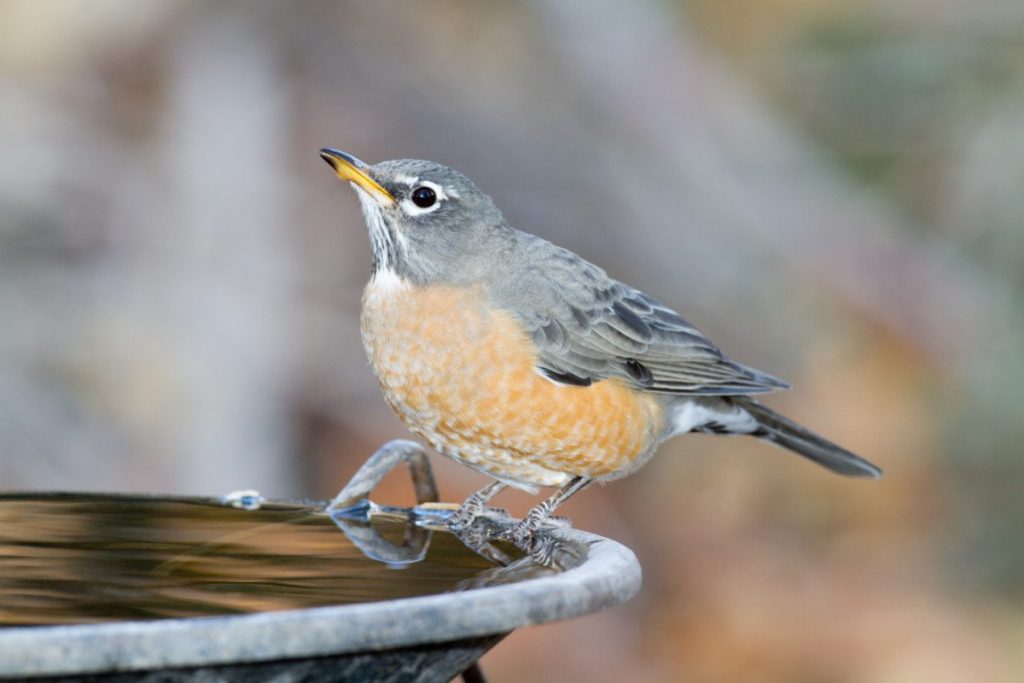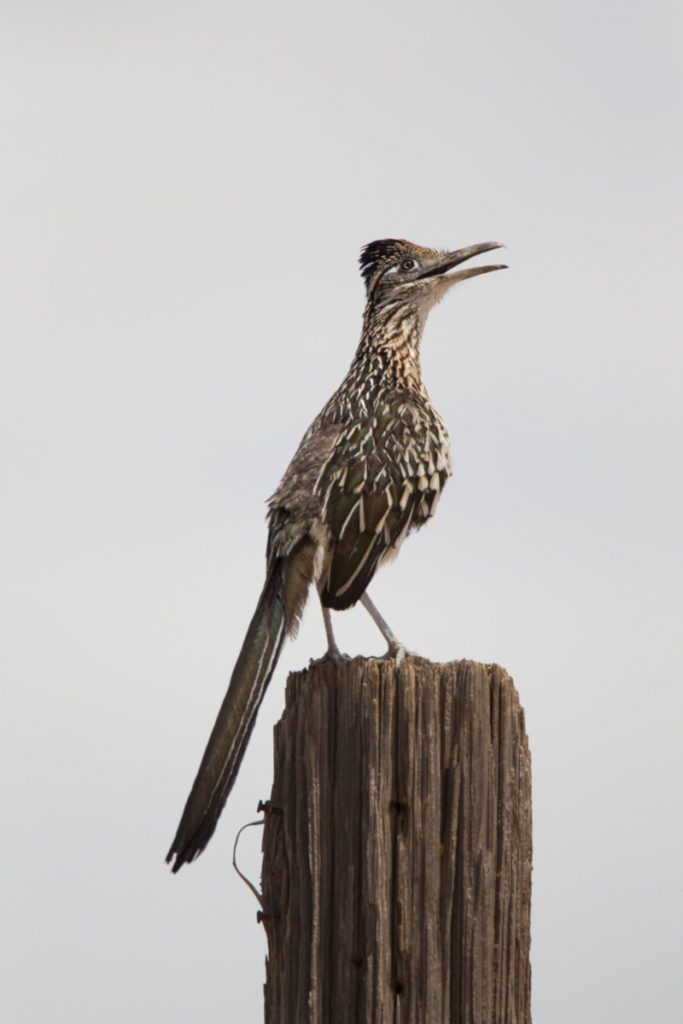How birds handle hot weather
By Bob Lewis
With our temperature climbing this week, some of us are wondering how birds deal with elevated temperatures. Remember, they’re sitting inside a feather quilt. A review of Cornell’s Handbook of Bird Biology and a bit of personal experience provide some clues.
Like mammals, birds control their core body temperature in a fairly narrow range. For birds, that range is usually 39-43 degrees C (102-109 degrees F). Usually the ambient temperature is lower than the bird’s body temperature, and the bird’s metabolism produces heat to keep warm. But when the outside air rises above about 40 degrees C (104 degrees F) the bird’s metabolic heat will cause it to get too warm. So the bird needs to cool down.
Humans perspire, and the evaporation of sweat cools the body. The most obvious ways a bird can utilize evaporative cooling is by panting or gular fluttering (looks like vibrating the throat), which increases airflow across moist surfaces and increases evaporative cooling. But of course this results in water loss. Birds can also lose water vapor through their skin, even with their feather coat. Although they don’t perspire, this water loss still results in some cooling. It’s important that birds have access to water when the temperature is high, to replace that lost to cooling processes. Without water, hyperthermia can result and can be lethal. Keep your bird bath full!


Birds move to shady areas when it gets hot, and often in the heat you can see a bird under a bush in the shade, panting. Some birds like the Turkey Vulture urinate on their bare legs, increasing evaporative cooling in that way. Other species like Black-necked Stilts wet their feathers in a stream or puddle, and then return wet to their nests to cool nestlings. Shorebirds standing in water lose heat through their legs, and will stand with both feet in the water on hot days, as opposed to the well-known single-legged posture when the weather is chilly.
Birds in normally hot areas often have lower metabolic rates, producing less body heat so panting isn’t as necessary. Even so, on a warm day in South Africa, a panting White-breatsed Chat and Spotted Eagle-Owl posed for pictures.


Bob Lewis, a former Golden Gate Bird Alliance board member and a birding instructor for 23 years, was awarded the American Birding Association’s Chandler Robbins Education/Conservation Award in 2016. In 2018, he will co-teach a new session of our acclaimed year-long Master Birder class, co-sponsored by Golden Gate Bird Alliance and California Academy of Sciences. For information on the class, check the Classes page of our web site in December 2017.
